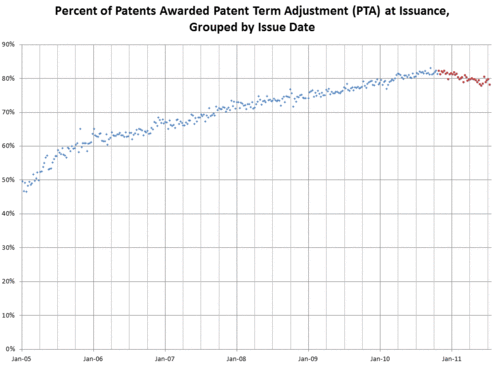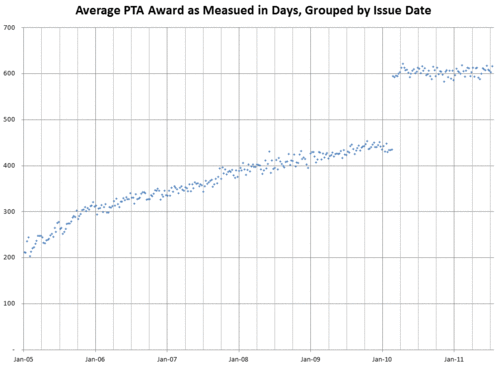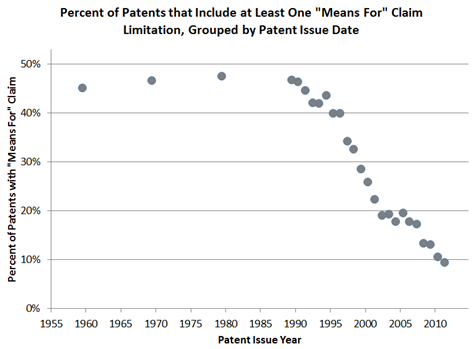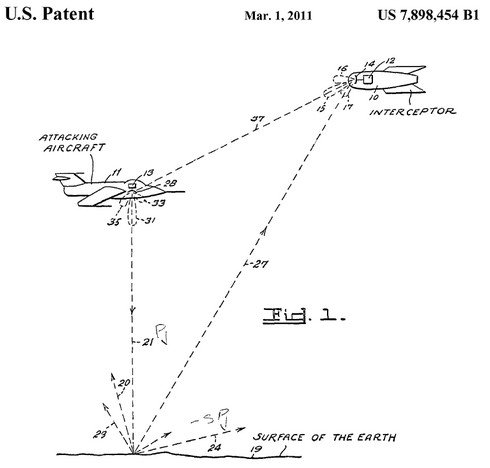By Jason Rantanen
Patent litigation can be particularly frustrating and inefficient when litigation costs far exceed the potential damages resulting from an infringement. This issue is particularly problematic when the patent holder's expected litigation costs are significantly lower than those of the accused infringer, such as in the instance of the prototypical "patent troll," because under such circumstances the settlement value is largely driven by the expected cost of litigation to the accused infringer as opposed to the actual damages from the infringement, resulting in a windfall for the patent holder.
One strategy for addressing this issue – and for streamlining patent litigation generally – is to decide cheaper and easier issues early in the litigation process, a concept discussed by Dennis Crouch and Robert P. Merges in their article Operating Efficiently Post-Bilski by Ordering Patent Doctrine Decision-Making, 25 Berkeley Tech. L.J. 1673 (2010). An example of the strategy is "reverse bifurcation," in which the damages phase is moved to the front of the litigation sequence with the goal of figuring out how much is really at stake. This procedural move may be particularly appropriate in the case of patent holders who sue a large number of parties, including parties with relatively small potential damages pools, in the hopes of extracting the aforementioned undeserved rents.
This approach was recently employed by Otter Products LLC in its suit with Gellyfish Technology of Texas. Earlier this year, Gellyfish sued Otter and 36 other defendants for infringement of Patent No. 6,847,310. After being served with the Complaint, Otter attempted to identify the products accused of infringing the patent, finding that only two of the products named in the Complaint were ever sold by Otter, and those products (which have since been discontinued) had trival sales with potential damages estimated in the $800-$1200 range.
When Otter's settlement offer was rejected, it filed a motion seeking to sever itself from the existing case and requesting a "reverse bifurcation" procedure in the new matter so that damages discovery and trial would precede liability discovery and trial. A copy of that motion is available here: Download Gellyfish v Alltel Motion. The motion appears to have had some effect: shortly after it was filed, Otter withdrew the motion citing additional discussions between the parties that suggested an amicable resolution.
While no order issued in response to Otter's motion, Otter's approach makes considerable sense. From a judicial and party efficiency standpoint, forcing patent holders to identify the accused products early on during litigation may greatly simplify discovery and perhaps eliminate the need for a merits determination, which itself can be extremely complex. It may also help to discourage patent holders from bringing suits in instances where the potential damages are minimal compared to litigation costs. And forcing patent holders to think about a realistic universe of damages (as opposed to pipe-dreams of every product sold by the accused infringer) may encourage earlier settlement – as perhaps occurred here.
Note: Thanks to Robert Merges for pointing me to the Otter case and the EDTexweblog.com for background on the case.





 Brown’s patent is directed to a Dual Composition Golf Tee. The patent itself is occupies only six pages and with five claims (one independent). The patent cites several prior patents — most of those being Brown’s own prior patents that were also examined by the same USPTO primary examiner Steve Wong. In the background section, Brown explains how his claimed invention is an improvement upon his prior own inventions. Brown’s case was “made special” after he filed a petition based upon his age (over 65 years).
Brown’s patent is directed to a Dual Composition Golf Tee. The patent itself is occupies only six pages and with five claims (one independent). The patent cites several prior patents — most of those being Brown’s own prior patents that were also examined by the same USPTO primary examiner Steve Wong. In the background section, Brown explains how his claimed invention is an improvement upon his prior own inventions. Brown’s case was “made special” after he filed a petition based upon his age (over 65 years). 
